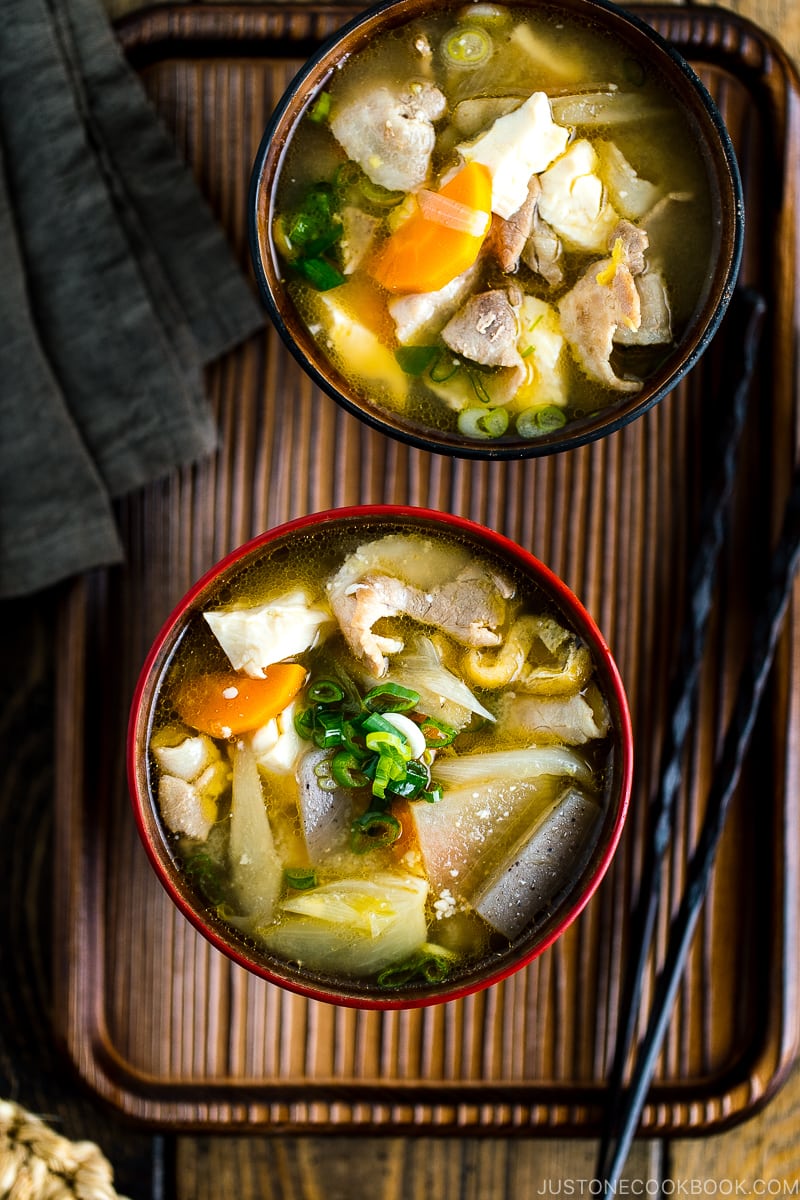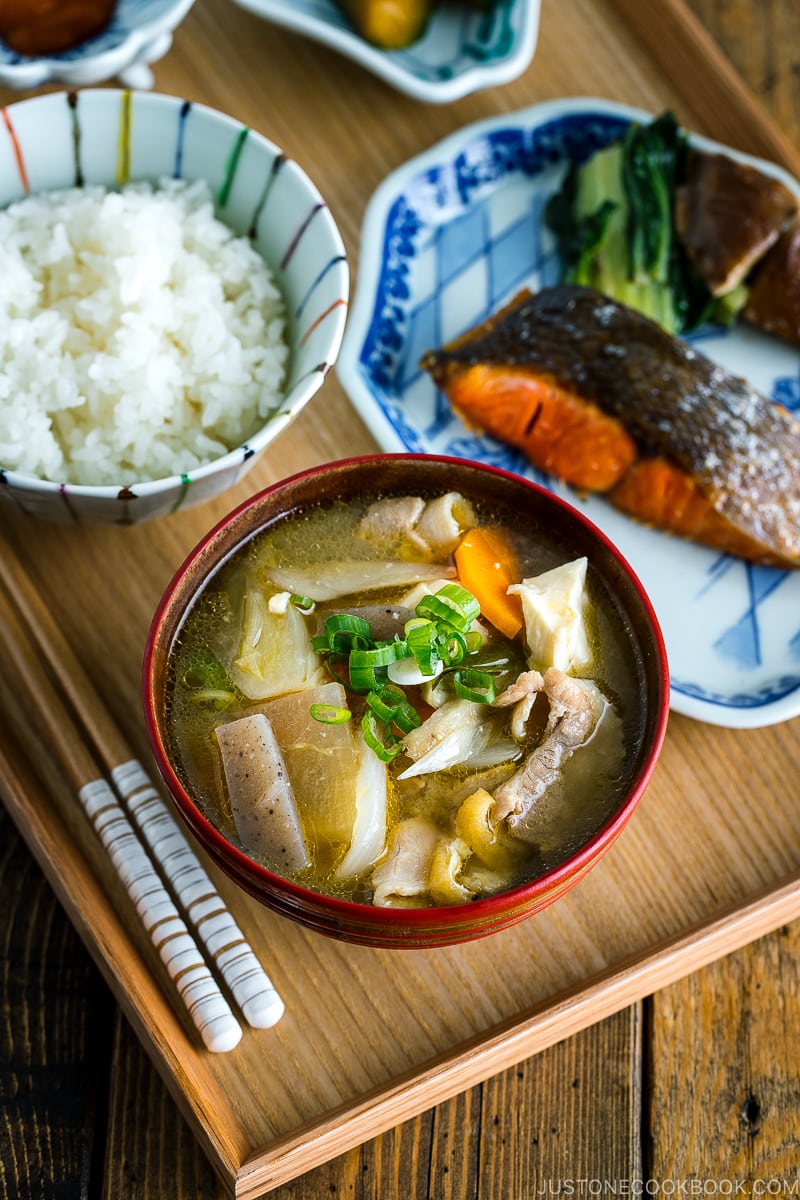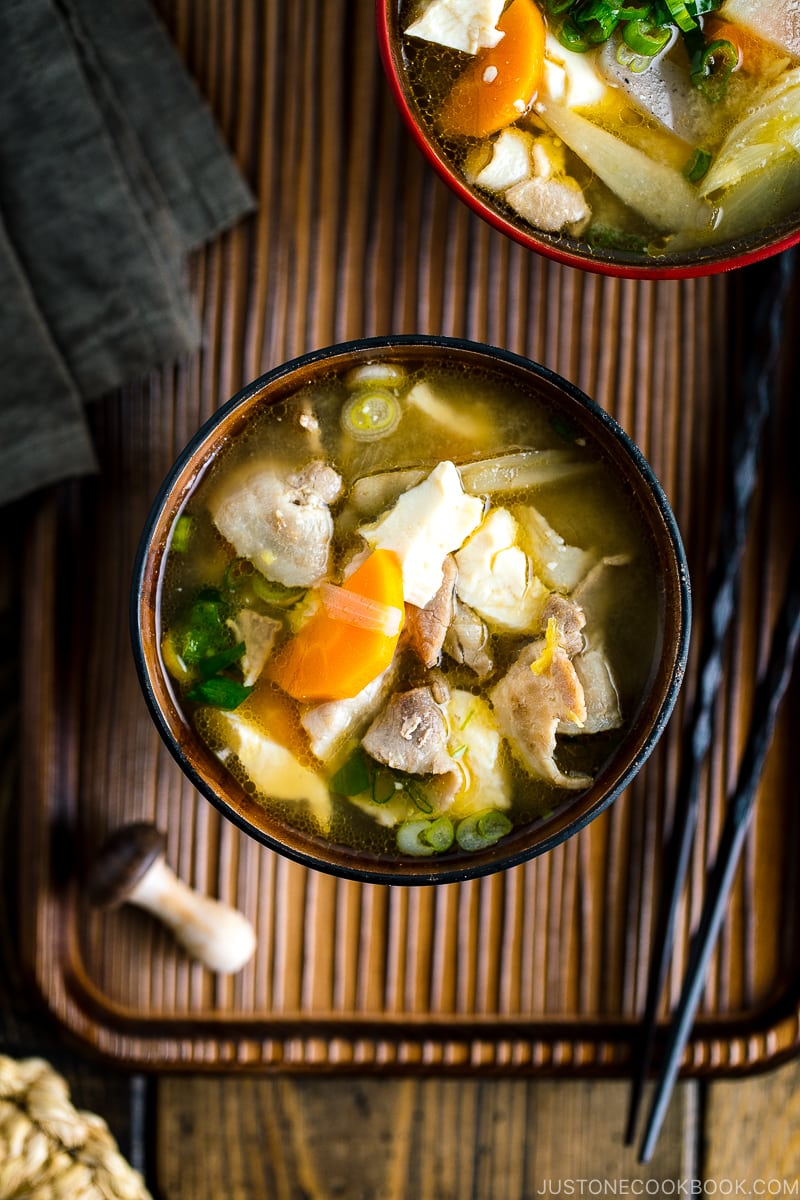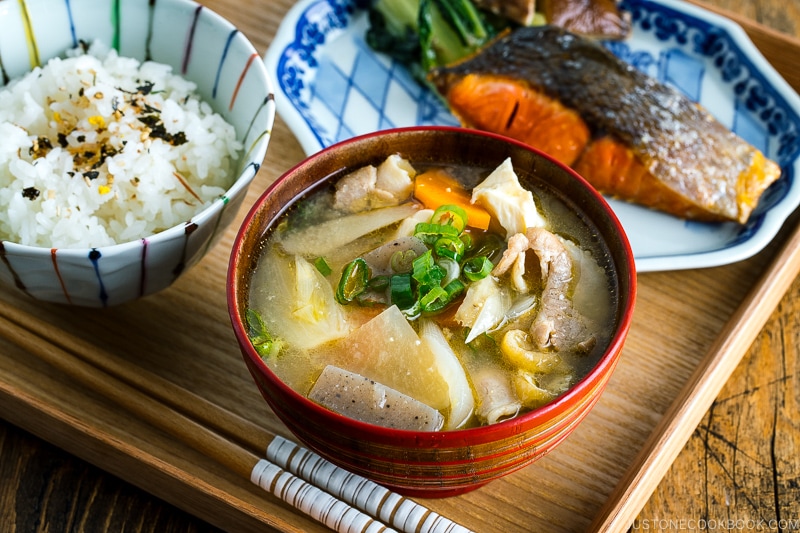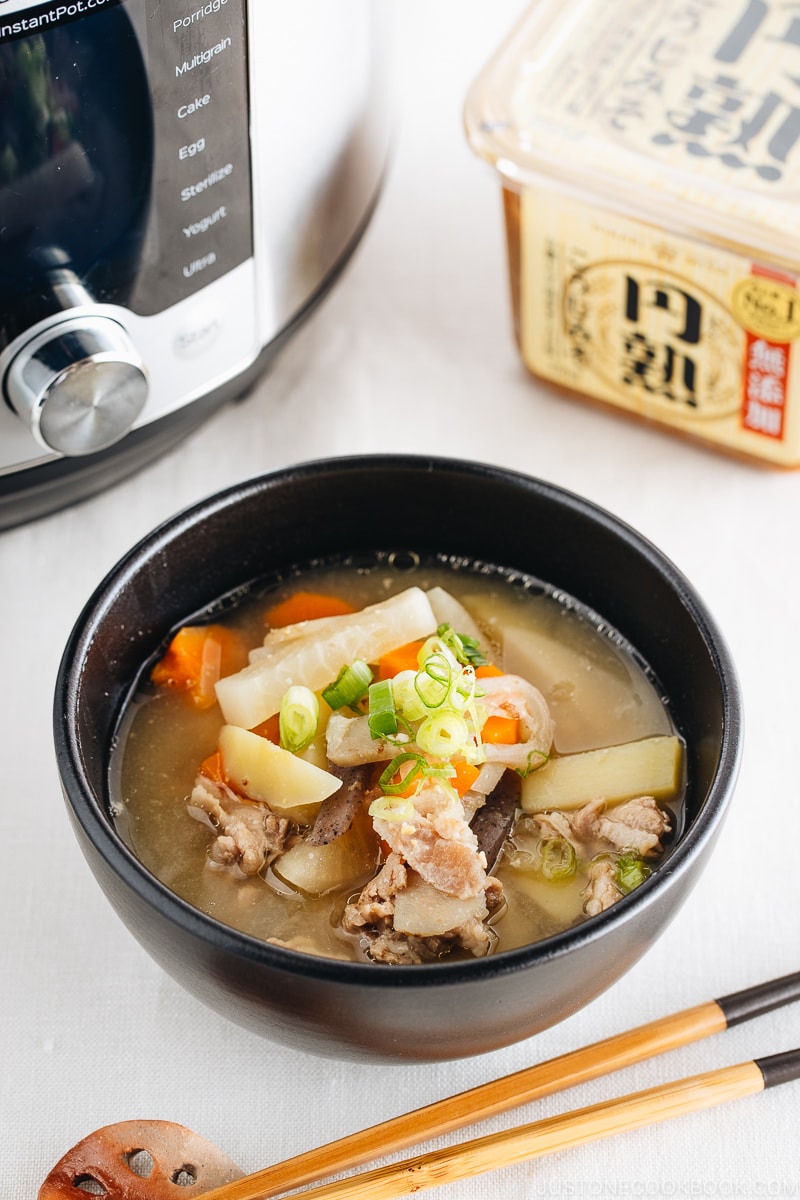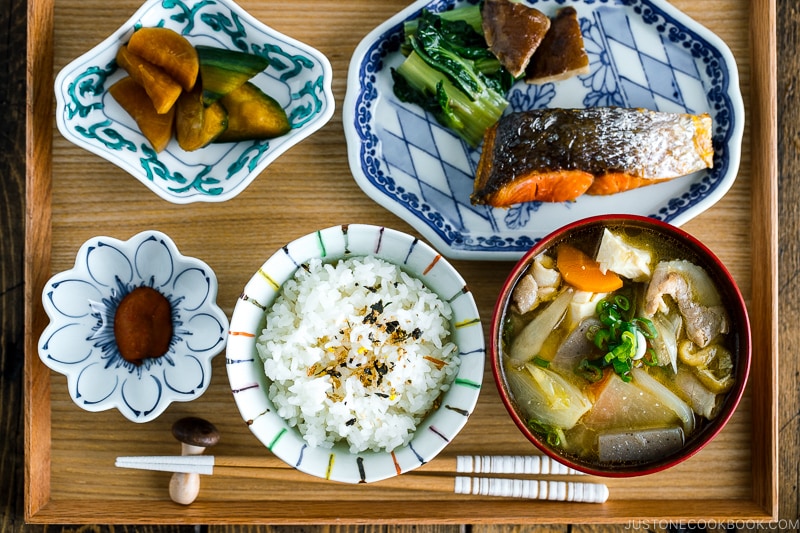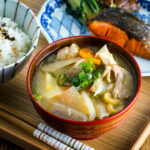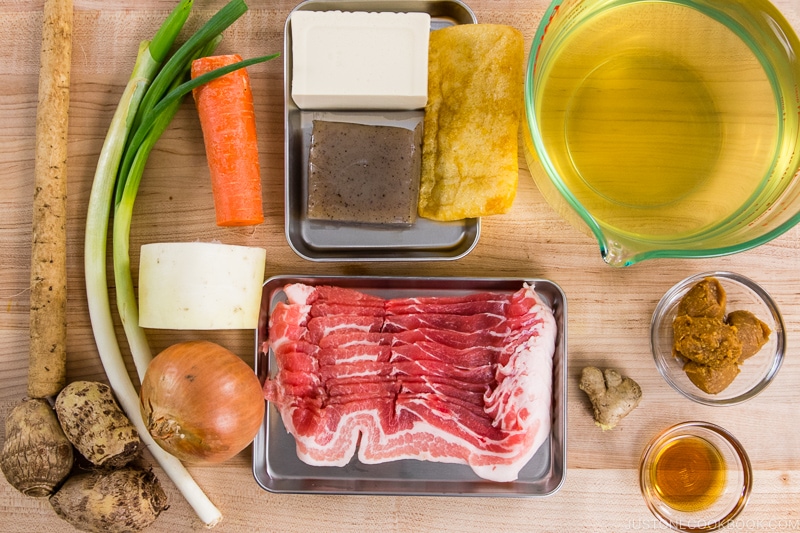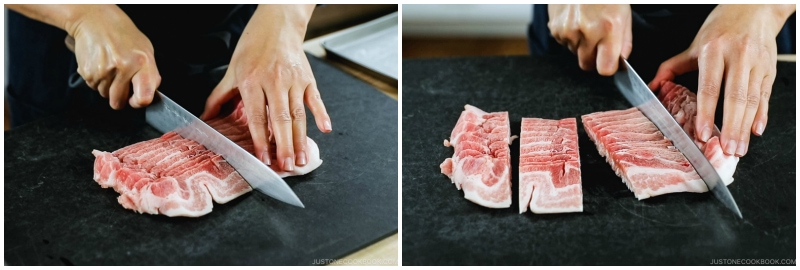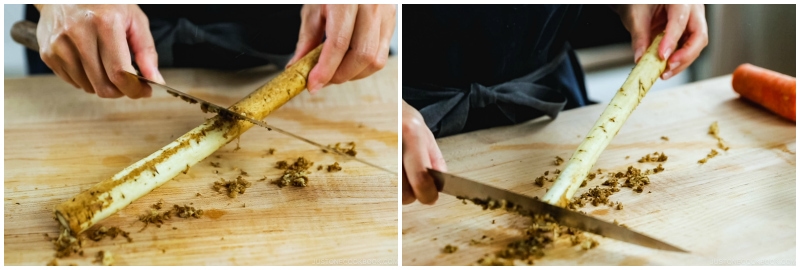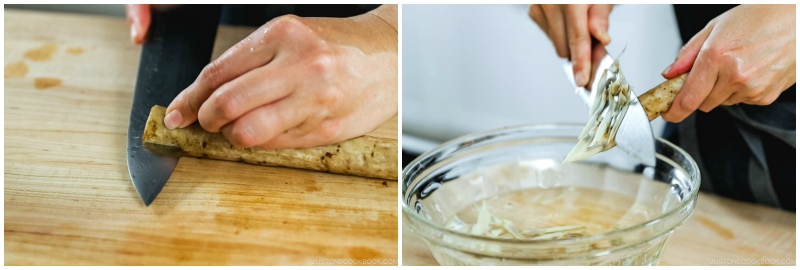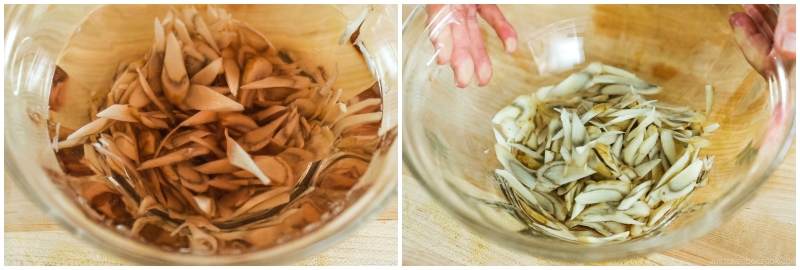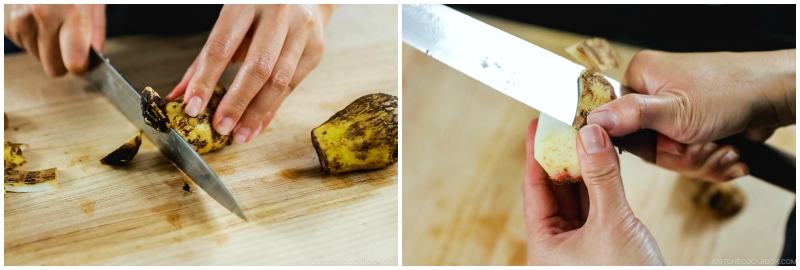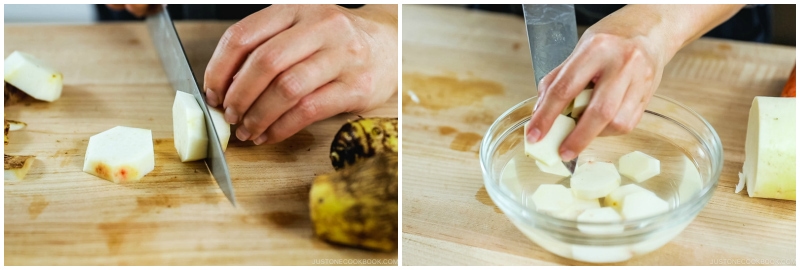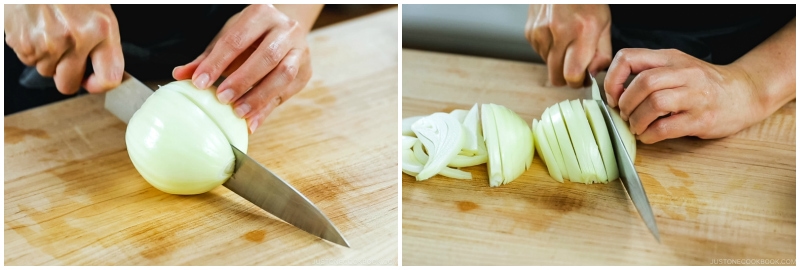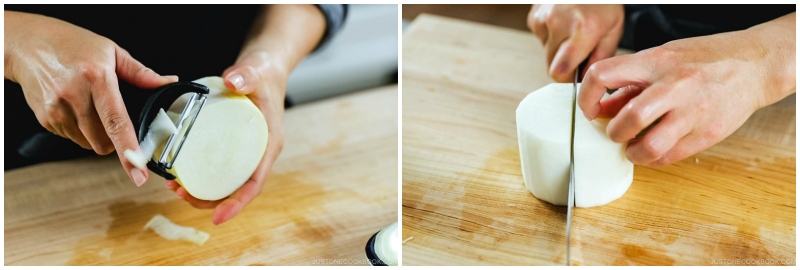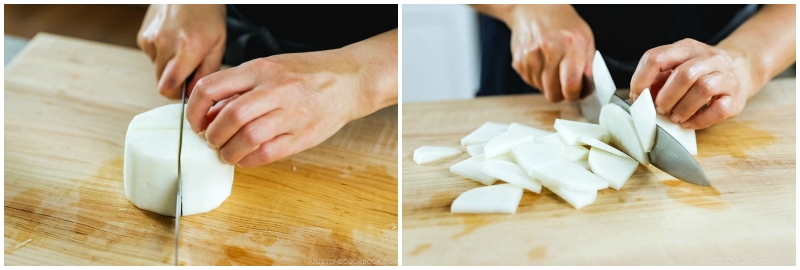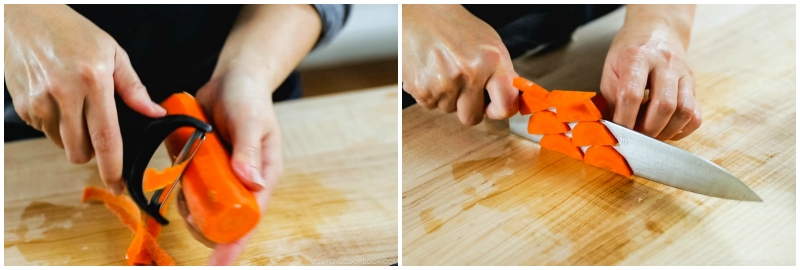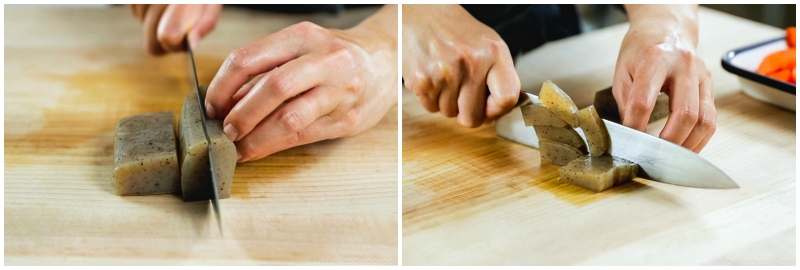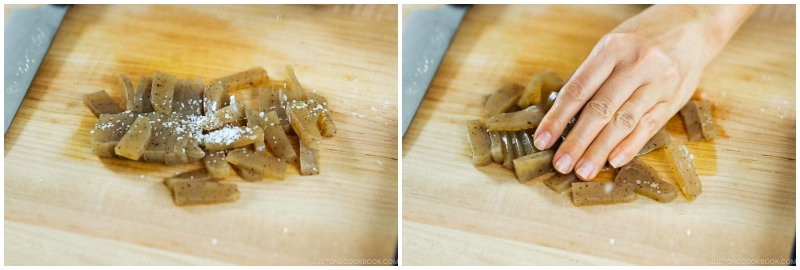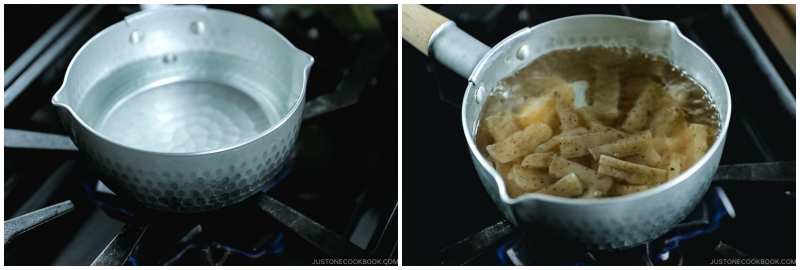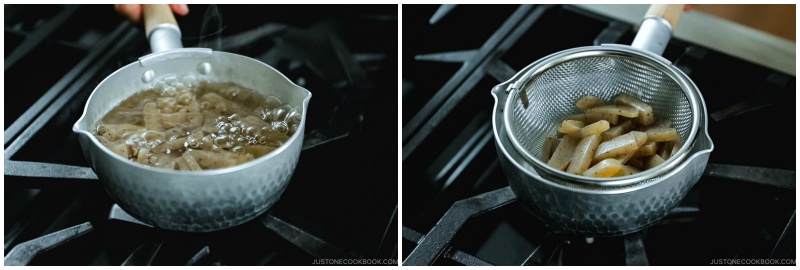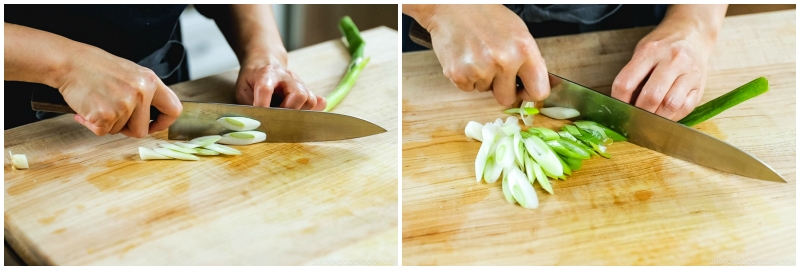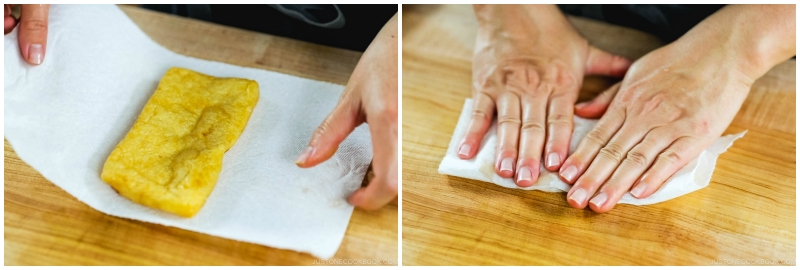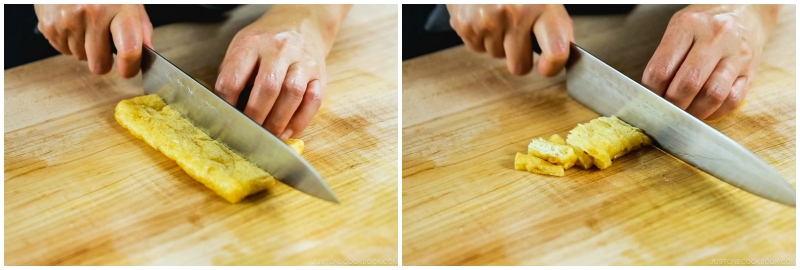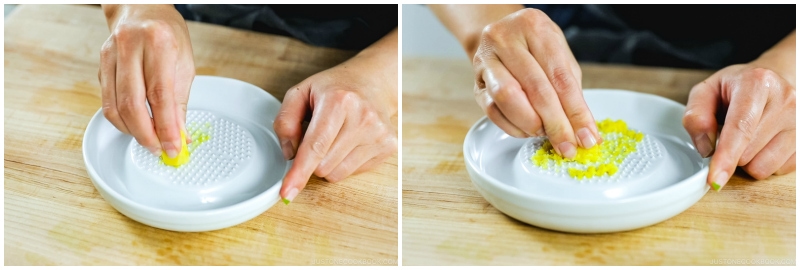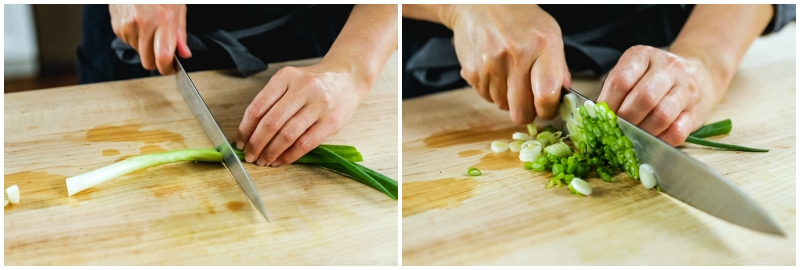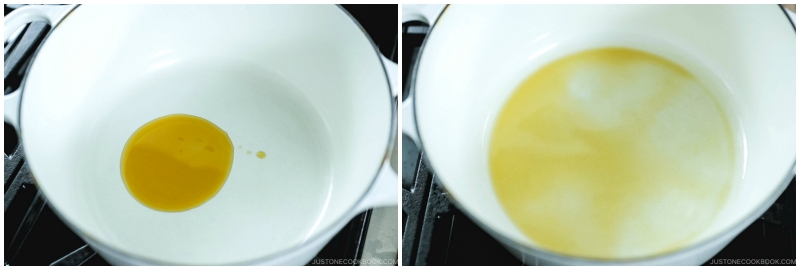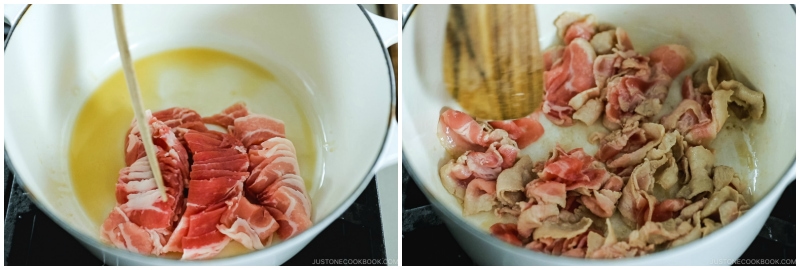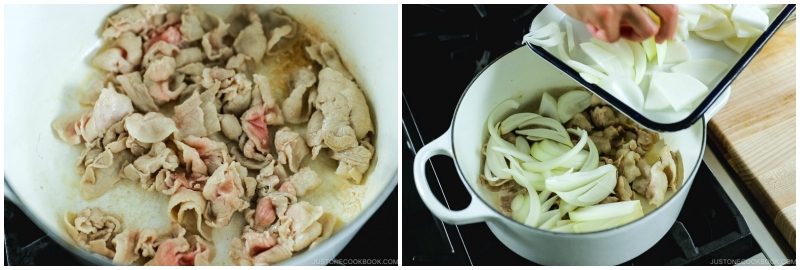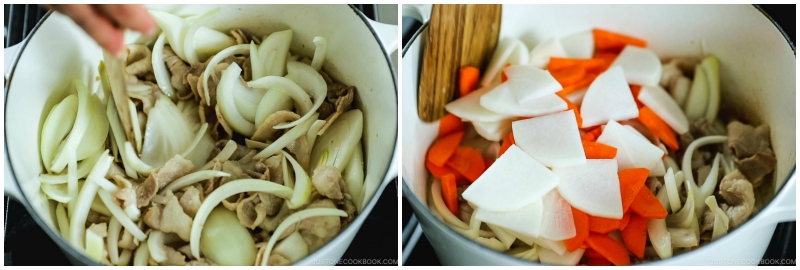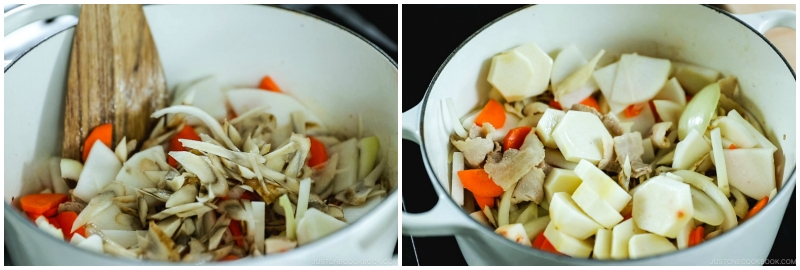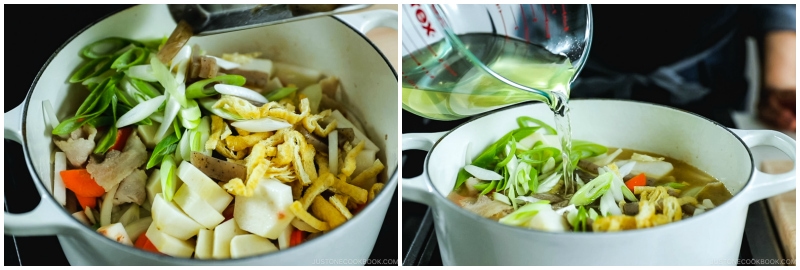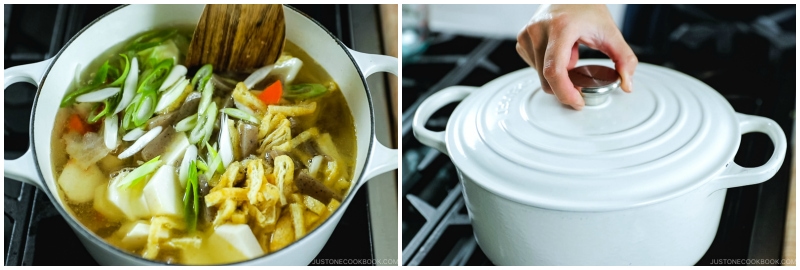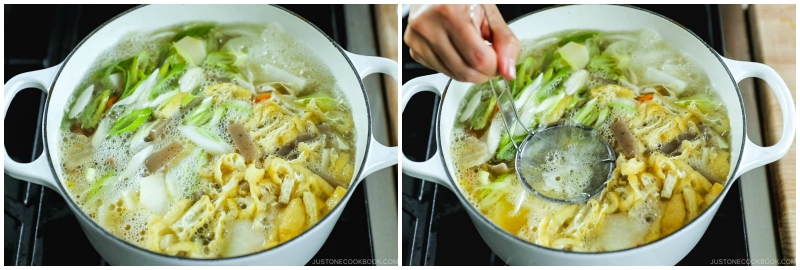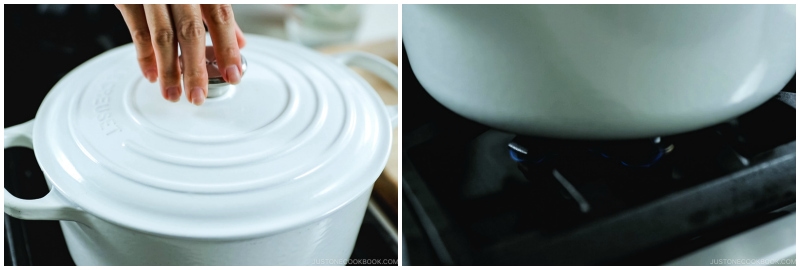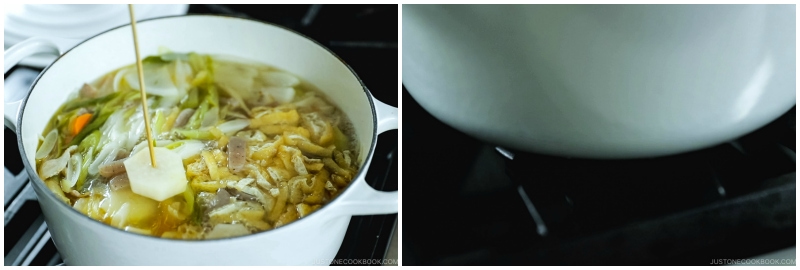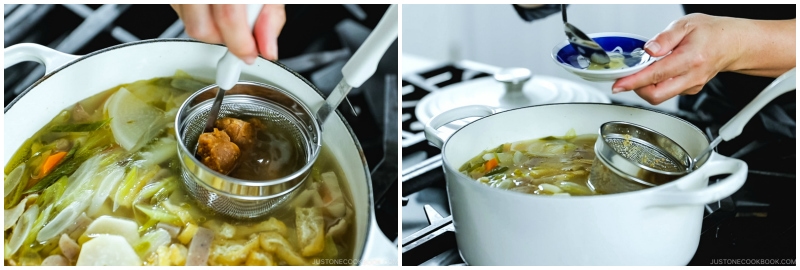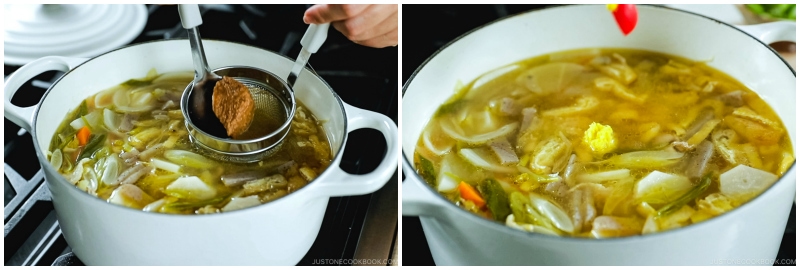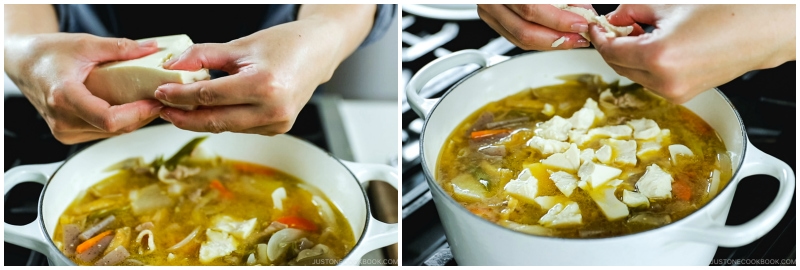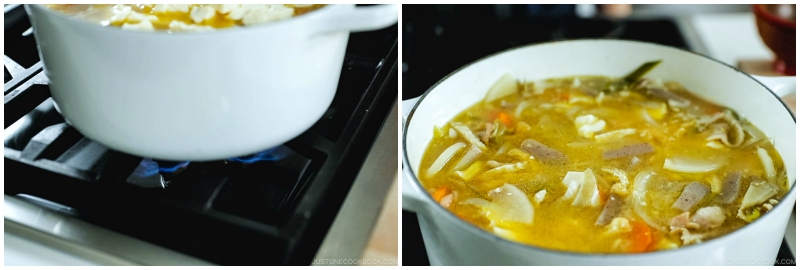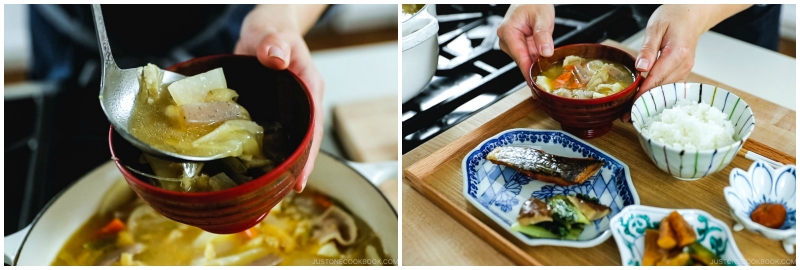If you ask me what my favorite miso soup is, I would immediately say Tonjiru (豚汁). This pork and vegetable miso soup is one of the true comfort foods that I crave when I travel. There’s nothing more soothing than a simple meal of Onigiri rice balls and tonjiru. You might have seen tonjiru featured on the popular Japanese TV drama called Shinya Shokudo (深夜食堂) or Midnight Diner: Tokyo Stories on Netflix. In the opening scene, the main character, Master, is seen making a big pot of this hearty soup with steam wafting through the kitchen. If you find yourself extra hungry after watching all the scrumptious meals prepared by Master, it’s time to create them right in your own kitchen! Each of the dishes is doable and I have the recipes just for you (Season 1 recipes; Season 2 recipes). Let’s start with Tonjiru!
What is Tonjiru?
Tonjiru (豚汁), literally meaning pork (ton) + soup (jiru), is basically a type of miso soup featuring pork and root vegetables. Some people call it butajiru (豚汁), too; it’s just another way to read the same kanji character. It’s a very popular dish in Japanese home cooking. It’s a cold-weather staple that I enjoy year round. Not only is it delicious, it packs a lot of protein, minerals, fiber, and B vitamins that are great for both body and soul. It’s the kind of comfort food that will warm and restore you. So, what’s not to love?
Ingredients You’ll Need
This soup is loaded with hearty root vegetables and pork. Pork belly is the most common cut we use. It’s the same cut as bacon, but pork belly is uncured. You can find it thinly sliced at Japanese or Korean grocery stores or slice the meat thinly at home. Some grocery stores like Whole Foods may also offer pork belly at the butcher counter if you ask.
For the Meat, Vegetables, and Tofu
sliced pork belly – sometimes, I use a combination of pork belly and less-fatty pork loin; for vegetarian/vegan, skip the meat and add more tofu, mushrooms, or veggies gobo (burdock root) Japanese taro (satoimo) onion daikon radish carrot konnyaku (konjac) kosher salt – I use Diamond Crystal brand; for cleaning the konnyaku Tokyo negi (naga negi; long green onion) aburaage (deep-fried tofu pouch) medium-firm tofu (momen dofu) – or use silken tofu; learn more at my tofu page.
For the Soup Broth
The sautéed pork belly gives the soup a sweet-savory flavor so some people use only water and leave out dashi in their tonjiru. However, I personally prefer dashi in the soup broth for more umami and depth.
toasted sesame oil dashi (Japanese soup stock) – use standard Awase Dashi, dashi packet or powder, or Vegan Dashi miso (Japanese fermented soybean paste – each miso brand/type tastes different, so adjust the amount to taste ginger (grated, with juice)
For the Garnish
green onion/scallion shichimi togarashi (Japanese seven spice) – optional, for a spicy kick
Variations and Substitutions
Make it vegetarian/vegan. As I mentioned above, you can skip the meat and add more tofu, mushrooms, or veggies. Try different vegetables. Each household makes slightly different tonjiru with various ingredients and miso of their choice. Besides what I use in my recipe, I’ve seen:
bean sprouts green cabbage or napa cabbage (hakusai) Asian garlic chives (nira) potato shimeji mushrooms (beech mushrooms) shiitake mushrooms
Use a different type of miso. There is no specific variety of miso that you must use here. If you like a certain type of miso paste (such as white, red, or awase miso), you can use it. If you are new to miso, read my miso pantry page to learn more.
How to Make Tonjiru
Following is a brief overview of the steps; see the full instructions in the recipe card below.
Tips for Making Tonjiru
Pressure Cooker (Instant Pot) Tonjiru
No time to keep a close watch on the pot? Try making this delicious soup in your pressure cooker using my convenient Instant Pot Tonjiru recipe.
What to Serve with Tonjiru
Nourishing and easily customizable, tonjiru is unquestionably home cooking of the best kind. You can make a big pot and enjoy it for the next 5 days! For a simple cozy dinner, I like to serve the soup to accompany the main dish like Japanese Salted Salmon along with steamed rice, pickles, and a few side dishes. Wish to learn more about Japanese cooking? Sign up for our free newsletter to receive cooking tips & recipe updates! And stay in touch with me on Facebook, Pinterest, YouTube, and Instagram. Editor’s Note: The post was originally published in 2011. The post has been republished with new images and content on July 8, 2020.
